The Maximum Weather Instruments History
Beginning in 1968 as a family business, Maximum Instruments recently reached the half-century mark, surviving and thriving on the strength of good products and a willingness to change direction when the business winds shifted.
Early Years: A Family Start-Up
The story of Maximum Instruments begins with its predecessor company, Wilfrid O. White & Sons, which produced compasses and depth sounders and other equipment in the 1940s and 1950s for the Navy and the recreational marine market. After Wilfrid died in 1955, his two sons, Gordon and Robert, continued running the company—Gordon was the president, focused largely on engineering while Robert was the vice-president and treasurer, focused on managing the business.
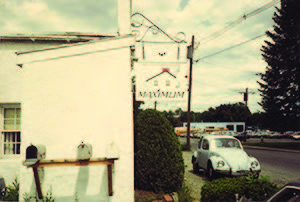 Maximum Office
Maximum Office
Natick, MA 1983
Gordon developed the Corsair, a small, internally gimbaled compass, which was a break-through in the ‘50s for the recreational boating market. Gordon also developed a wind-speed and wind-direction instrument for use at home or afloat, and later added a full line of matching instruments—an electronic remote thermometer, a barometer, a clock and a tide clock. This was the earliest beginning of Maximum, Inc.
Gordon was never short of ideas to develop into products, so the key question was always deciding where to invest as a business. As Robert’s son Eldridge (“Ridge”) says, “Gordon was the accelerator; Dad was the brakes.”
The Eastern Company, a holding company that owned Danforth Anchors, bought the White company in the early ‘60s, and later merged Danforth and White. Robert left to start his own business, but Gordon stayed on for a few years, even as the company moved operations to Maine.
It’s never easy working for someone else after you’ve been in charge, and by the mid-‘60s, Gordon took what he called an “involuntary retirement.” It didn’t take long before he had patented some new instruments, accepted that he would lose his pension by competing with his old company, and started a new family business in his basement in Dover, Mass. In the summer of ’68, Maximum Instruments was born, and the company sold its first wind instrument that fall.
Gordon was always fascinated by the wind and figured others would be, too. He first developed the Observer, an instrument that displayed the wind speed as measured on an outdoor anemometer. Gordon designed and built both the instrument and the anemometer, solving the electromechanical challenge in a unique way, by placing a magnet in the shaft of the anemometer; every time the cups revolved, the magnet passed a coil and an output pulse was produced.

The shaft was at first made of stainless steel, but then switched to beryllium copper, which had the advantage of being non-magnetic. The cups were made of Lexan plastic and the bearings of a modified Teflon called Rulon, mounted in rubber O rings for shock resistance.
Gordon then developed the Maestro, which included his patented “gust register.” The instrument displayed peak gusts of wind by means of a passive needle that was in fact a very long, hand-wound spring made of gold-plated phosphor bronze. By introducing a partial AC current into the regular gauge needle to cause minute oscillations, the gauge needle developed enough torque to hammer the passive needle up the scale like a tiny pile-driver. And there it would stay to show the highest gust of wind until the owner manually turned it back down. The gust register was also added to the Observer, which was later renamed Vigilant.
Gordon’s son Ken was in business school in 1968 and helped his father with the original papers of incorporation, setting up bank accounts, etc., while Gordon was getting the tools made for the shop.
Gordon was very direct with his employees, one of whom was his nephew Bruce. According to his brother Ridge, Bruce had “steady hands and excellent fine motor skills” but was somewhat intimidated by his uncle’s stern manner. As a result, Bruce often had sweaty palms while assembling instruments, which led Gordon to require him to wear white gloves in the shop to keep the delicate parts dry. Ken says, “The gloves didn’t work, so Dad got him some watchmaker’s cream that kept your hands from sweating.”
Ridge describes his uncle’s early test methods as follows: “To test his anemometer, Gordon convinced his wife Betty to go for a midnight ride in his Olds V8 Toronado. He took along a Vigilant indicator, a short length of cable, and windspeed cups on a short strut. They would set out on Route 128, hoping for no traffic, and Gordon would say, ‘Betty, put those cups out the window now!’ Betty would thrust the cups out the window, and Gordon would drive with the indicator in his lap so he could compare it to the speedometer gauge on his dashboard. Rumor has it he got up to 100 miles per hour and was satisfied with the result.’”
The Oldsmobile on Route 128 was not the only test track for the Maximum anemometer. Gordon also went to the wind tunnel at MIT to confirm the accuracy of his durable Lexan cups.
In its start-up years, the new company built its reputation on the technical abilities of its founder to create extraordinary instruments. But Gordon White decided he wasn’t going to run the company and preferred to focus on the product. That’s when his son, Ken, returned to take the reins. Ken says, “I always wanted to own and run my own company.”
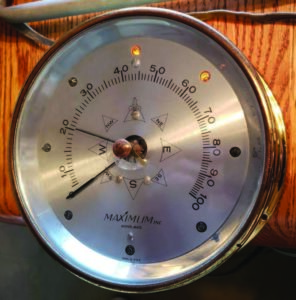 First Untouched Maestro
First Untouched Maestro
1969
The Next Generation Takes the Lead
Maximum Instruments soon outgrew Gordon and Betty White’s basement in Dover, Massachusetts, and moved five miles away, to Natick. Gordon’s son, Ken, finished business school and worked elsewhere for a few years, but then returned in 1974 and bought the company from his father.
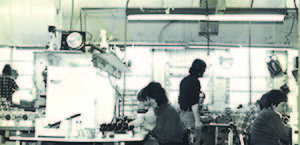 Production Floor
Production Floor
Natick, MA 1983
Ken says, “My Dad always told people that I purchased it with a ‘lot of paper, none of it green.’” Gordon was in his late 60s at this point and according to Ken became the company’s “Engineer Emeritus,” but the founder remained very hands-on on the production side.

Ken’s cousin, Bruce, had worked in the basement workshop from the beginning on the assembly of various components, but he took a job on the West Coast with Delta Steamship Lines.
“Dad needed somebody in production,” says Ken. “He was looking for a trainable high-school kid. When Ralph Bouzan applied for the job, someone else was hired, but they didn’t last more than a few days. Dad called Ralph and said, ‘Do you know what time it is? It’s 8:15 and you’re late for work.’” Ralph stayed more than two decades with the company, at first doing all the instrument assembly and then supervising three to five people as production manager.”
Maximum’s business model for its instruments was to sell mostly to stocking distributors, along with some sales through direct advertising in publications such as Yankee magazine, a digest-size publication with a unique New England-based readership. One of the strongest dealers was the business owned by Robert White, Gordon’s brother. Robert E. White Instruments, Inc., in Boston, distributed, sold, and serviced nautical instruments. The Whites also owned and published Eldridge Tide & Pilot Book, which was a natural place to advertise Maximum Instruments. Gordon’s nephew Ridge worked for his father and remembers Christmas seasons when they would place orders for 30 to 40 Maximum Instruments in a week.
Most sales of instruments were to areas where yachtsmen were located, largely on the East and West Coasts. The Northeast was the strongest market. Not far away, in Medford, Mass., was another stocking distributor, Imtra Corporation, which would purchase Maximum some years later.

During this period, the company diversified and began developing a new compass line. Gordon patented a compass you could mount either horizontally or vertically, and they were sold by mail order at full price. However, not every Gordon White product made it to the production line. He invented a remote-reading compass, but it was too complicated for the company to produce.
In time, it became clear that building and selling two different lines of product was too challenging for the small company, and the better cash flow came through the weather instruments. In 1977, Ken White sold the compass line to Danforth, along with the machinery and tools to mold it. Forty years later, Ken says going into the compass business might have been a bad idea, yet it was part of the family legacy.
When asked to summarize Maximum’s keys to success in its first 10 years, Ken White offers the following list:
1. Gordon White’s product ingenuity
2. The esprit de corps of a small company
3. Merchandizing well without discounting
4. Good products with a five-year warranty
Ken remained at the helm of Maximum until the beginning of 1979, when he sold it to Jim Brooks, a former employee with the means to buy and invest in the company’s growth. The sale marked the end of the White family’s ownership of Maximum, although Gordon White continued to consult. Under Jim’s leadership, the company was poised for new growth in the ‘80s.
Maximizing Growth in the ‘80s
Jim Brooks stopped by the Maximum Instruments office one day in the mid-‘70s to purchase an instrument. Company founder Gordon White showed him the full line of instruments, and one thing led to another: Jim signed on to run factory operations, with Ralph Bouzan, the production manager, reporting to him. Gordon was beginning to work less than full time at this point, and his son Ken was running the company, focusing mostly on sales, marketing and management.
 Maximum Crew
Maximum Crew
1981
Jim got to know the product and saw possibilities for growth. The company needed a fresh infusion of cash to develop its production line. In 1979, Jim bought Maximum from Ken and took the helm.
To grow the company, Jim encouraged development of an expanded number of models, including new instruments with digital readouts. To increase sales, he invested in marketing, producing a more upscale catalog that emphasized aesthetics as much as technical values. And on the production line, which he knew already, his focus was on increased efficiency.
When Paul Hutchinson joined the company in 1980, first as an electronic technician and then as chief engineer, there were seven employees working on production and five in the office. Gordon remained a consultant until his death in 1991.
In the early 1980s during the holiday season, Paul says, “October through December was hell due to production bottlenecks. By 1984, we had tamed that,” he adds, describing how Jim analyzed sales to the point he could predict what was needed so they could pre-build enough components to smooth out production.
In the ‘80s and ‘90s, a growing number of dealers stocked Maximum products in a wide range of retail businesses. While long-time outlets such as Robert E. White, Inc., and Imtra Corporation continued stocking, distributing, and selling instruments, there were dealers from high-end furniture and jewelry stores such as Tilden-Thurber in Providence, Rhode Island, and Astwood-Dickinson in Bermuda. On the West Coast, one of Maximum’s major distributors was the inflatable boat and engine company, Avon Seagull Marine. Maximum even expanded its sales to Europe, with a dealer in Belgium.
 Gail (Assistant) & Grace (Office Manager)
Gail (Assistant) & Grace (Office Manager)
1985
Jim Brooks owned and ran Maximum Instruments from 1979 until 1986, a solid period of growth for its original product line of household weather instruments. According to Paul, who in 2018 serves not only as chief engineer but also as chief historian, total revenues doubled, with sales of $1 million annually. Yet markets were already shifting, with increased competition from imported instruments, and Jim was ready for other challenges. Once again, Maximum was put up for sale.
Changing the Business Model in the Nineties
When Jim Brooks felt he had grown the company as much as he could as owner and president, he put Maximum up for sale and sold it to Imtra Corporation, in Medford, Mass. Imtra spread out the purchase, covered staff health insurance, and kept Maximum in its Natick office for close to two years, making the transition easier for all involved.
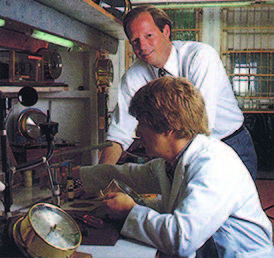 Jim Brooks (Owner) & Larry O’Rielly (Production Manager)
Jim Brooks (Owner) & Larry O’Rielly (Production Manager)
1983
Imtra built a new facility in 1987 in New Bedford, Mass., and moved Maximum’s operations there in early 1988. Two employees made the move—Ralph Bouzan, production manager, and Paul Hutchinson, chief engineer.
Imtra was a distributor for many products, including Maximum weather instruments, and the two companies had a symbiotic relationship. To the surprise of Ralph and Paul, Imtra made the decision to maintain the separation and retain the Maximum brand identity.
Nat Bishop became the next president of Maximum, moving up to New England from his previous position in Imtra’s Florida office, and he immersed himself in the business, with Jim remaining available on a consultancy basis for a time. One theme that emerged under Nat’s leadership was a reduction in the number of brass instrument models for sale, an effort to increase efficiencies. New models were introduced, but those sold at lower volumes or lower margins were discontinued.
Nat looked for what the company could do that was different outside of what came in traditional brass. One example was an electronic desktop device called WeatherMAX, an all-in-one multi-function weather processor with digital screen introduced in 1993. The model had several good years, but sales dwindled and it was ultimately discontinued in 2001.
During this period, Maximum also added its first and only product through acquisition when the company bought the R. A. Simerl Instrument Company, which manufactured the DIC-3 and BTC handheld anemometers. These instruments incorporate a unique folding 3-cup anemometer that is accurate no matter how it is oriented. The units are still offered today and count the U.S. military and Forestry Department as continuing customers.
 Nat Bishop
Nat Bishop
President from 1986-2001
Diversification happened gradually. In the ‘80s, Maximum had begun selling a small number of anemometers to companies in the start-up wind-energy industry. With the development of wind farms, Maximum found growing interest in the commercial sector for the durable, accurate, repeatable and inexpensive anemometers Gordon White had created 20 years earlier. Over the years, the only significant change to the design by Paul Hutchinson was an upgrade to the anemometers’ terminal posts.
The anemometers were of value to the wind industry in the assessment phase, recording wind strengths over a period of time to prove that a site had the right amount of wind to merit investment in wind turbines. As the wind business gained momentum, Paul says he was spending an inordinate amount of his time on the phone explaining things to researchers until Nat made a preferential arrangement with a start-up company in Vermont called NRG to market the anemometers. Sales began to grow, from hundreds of units per year to thousands. By the late ‘90s, NRG was selling 5,000 Maximum #40 anemometers annually and sales would grow much higher after 2000.
Scott Stevens joined the company in 1996 as the production manager, replacing Ralph Bouzan. Scott says that under Imtra, Maximum had retained its long-time philosophy of doing everything possible in-house, although Ralph was beginning to change that thinking. On Scott’s watch, the trend accelerated, and in the two decades that followed, out-sourcing of certain components became the norm.
The goal, says Scott, was to continue shipping “on demand,” which remains a Maximum tenet to this day. “We can usually ship an order on the same day we receive it,” he says, “although we have a handful of products that take an extra day because we want to assemble and run them for 12 to 24 hours first.”
Outsourcing, says Scott, helped relieve bottlenecks such as the one he encountered in 1996 in the sub-assembly of parts. Electronic instruments had become more complicated over time, and much of the sub-assembly now required more surface-mounted than through-hole mounted parts. Final assembly and testing of all instruments continued in the New Bedford facility.
In 1998, Peter Kilgore joined the company to push its marketing and sales effort across two changing markets— both the commercial market for anemometers and the consumer market for brass instruments. Nat was serving as president of both Maximum and Imtra at this time, and after two years, he asked Peter to take over the top job at Maximum.
 Maximum Weather Instrument in an owners home
Maximum Weather Instrument in an owners home
2013
A Fabulous Uncle Passes, W. Gordon White
Through its first 23 years, from 1968 to 1991, Maximum Instruments had four owners, but none was more influential in the success of the company’s products than its founder, Wilfrid Gordon White. When he died in 1991, his nephew, Ridge White, wrote the eulogy, in which he recounted how his “Uncle Bussie” started Maximum with the wind instruments and the patented gust register. “Everyone, Bussie figured, is interested in extremes,” he says. “He certainly was!”
A man of extraordinary creativity and energy, Gordon patented dozens of product ideas in his lifetime and produced many of them. These include patents spanning mine-sweeping methods to the spherical, internally gimbaled compass design that has become the standard for all boats.
For Maximum, there’s no question that the Gust Register was the most remarkable, created for his Vigilant and then Maestro wind speed instruments. As his son Ken says, “This patent alone put many children and grand-children through college.”
The patent, dated October 22, 1968, can be read online in full, but the abstract, which discusses the mechanism and the mixture of AC and DC current used, is surprisingly readable:
A wind-driven generator is connected to a…pivoted-coil type meter having a scale calibrated in terms of wind velocity. The meter has the usual pointer connected near one end to the coil, and having its other end opposite the scale, and is used to indicate current wind velocity. The meter has another pointer pivoted near one end, and having its other end opposite the scale. The two pointers are arranged to rotate in spaced-apart paths, and the tip of the maximum wind velocity indicator pointer is bent to extend across the path of rotation of the current wind velocity indicator pointer.
The generator is so connected to the meter that when current wind velocity is to be indicated, DC which varies conformably with the wind velocity is applied to the meter. When maximum wind velocity is to be indicated, AC is superimposed on the DC, causing the current wind velocity indicator meter to oscillate about its current wind velocity position, and to strike hammer-like blows against the tip of the maximum wind velocity indicator pointer, driving the latter to a maximum wind velocity position. Reset means is provided for moving the maximum wind velocity indicator pointer towards the zero end of the scale.
The precise language and detail of the patent give insight into the mind of the inventor. But there was more to the creative force known as Gordon White. Who designed the look of the instruments? Who made sure they were built precisely? Who sold them? Ridge White summarizes Gordon this way:
“My uncle was a fabulous uncle. I admire him for his imagination. He designed the logo, thought up the name, and had a sense of elegance and proportion. He designed the dials. He had a fabulous engineering sense combined with an artistic bent that enabled him to create a look for his products that nobody else could touch. He combined many talents—very clever, a fabulous salesman, a man with tremendous energy and enthusiasm, full of zeal, ideas and lists of things to do. He had very high standards and was committed to making his instruments the absolute best.”
 Maximum & IMTRA’s New Bedford Facility
Maximum & IMTRA’s New Bedford Facility
1988-Present
Recent Years: Quality, Efficiency and New Markets
In recent years, the drive for efficiency in production at Maximum has been complemented by continued focus on quality. Peter Kilgore, who succeeded Nat Bishop as president in 2000 and has guided the company since, says the focus on consumer products today is to “build quality products that give people pleasure.” It was no longer surprising to have real-time access to the weather conditions outside your house, but having a refined-looking instrument display that suits the interior style and design of your home holds appeal to many homeowners beyond those who are yachtsmen or weather enthusiasts. Equally important to the team at Maximum was maintaining top-notch customer service at every step—from initial interest through installation, operations guidance, and when needed, troubleshooting and service.
Peter started with Maximum in 1998, leading the marketing and sales effort before replacing Nat, who had become the president of Imtra Corporation. Peter was the first leader at Maximum with a background in weather, having minored in meteorology as an undergraduate, yet his initial focus was not on the technical or product side. He gave the most attention to the dealer network and to a growing direct marketing effort through catalog mailings and print advertising.
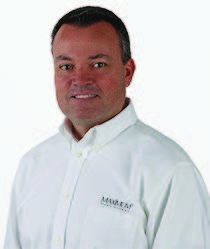 Peter Kilgore
Peter Kilgore
President, 2001-Present
A specific project was developing a more upscale coffee-table style catalog that sold the aesthetics as well as the quality of Maximum products. This was useful to dealers with shrinking staffs, as well as in direct mail campaigns.
Peter says he did a lot of list prospecting and more than doubled the number of catalogs mailed. He also ran print ad campaigns in 50 magazines, among them Yankee. Although the pages of print ads have been reduced in recent years, Maximum still runs periodic ads in Yankee, as the company has since the ‘70s.
In 1998, when Peter first joined Maximum, digital marketing consisted mainly of a limited website, which was soon replaced by an e-commerce site offering all Maximum products. The company also developed a “build your own weather station” capability that was popular for a period and, in 2008, a separate site for commercial customers at www.maximum-commercial.com. As of the company’s 50th anniversary, a redesign was imminent yet again for the consumer site — www.maximum-inc.com.
On the product side, led by long-time employees Paul Hutchinson, chief engineer, and Scott Stevens, production manager, Maximum maintained a small, extremely knowledgeable core staff with enough capacity to keep delivering product quickly while outsourcing the assembly of sub-components.
 Claude Raposo
Claude Raposo
2019
One key employee has been Claude Raposo, Maximum’s lead technician and overall customer service guru. His voice is likely the first one customers heard when they have called Maximum for tech support any time in the last 25 years. Others include long-term manufacturing employee Joyce Turgeon, who built Maximum instruments from 1986 in Natick until her retirement in 2016, and Joanne DeSousa who started the same year in Natick and retired in 2015. Louann Brayton started on the production team in 1988, right after the company moved to New Bedford, and remains an anchor within the manufacturing process, specializing in troubleshooting, repairs and quality control.
Market growth since 2000 came largely through increased sale of anemometers to the wind energy industry and multiple products to other commercial sectors. As of the company’s 50th anniversary in 2018, the majority of company revenue is delivered from commercial markets.
Maximum’s sale of anemometers to wind energy developers, largely through NRG Systems in Hinesburg, VT, grew dramatically as wind became an industrialized energy sector. Before a wind farm is financed, an assessment of the prospective location typically involves building towers and monitoring windspeeds across the site at different heights. Maximum’s #40 anemometer was an industry standard for measurement for many years, although in the U.S., some investors now require use of a certain number of more expensive “Class 1” anemometers, which cut into annual sales. The recession in 2008-2009 and associated financial meltdown also caused a major slowdown in anemometer sales to this sector.
As the wind energy industry has matured, other competitors surfaced to measure wind, such as those using LIDAR (laser) and SODAR (sonic) technologies. These are extremely expensive units but have the advantage of measuring windspeed at higher altitudes for turbines that are reaching higher and higher.
Despite riding the gusts and lulls of this energy sector, sales of anemometers have remained a key segment of Maximum’s business. Through developing a reputation with wind energy, Maximum has been exposed to other commercial sectors in need of anemometers and other weather instruments such as wind-speed alarms, and the company staff has developed some unique applications.
One example of a special use for anemometers is for a company that keeps cows cool in hot weather to maintain optimal milk production. When there isn’t enough wind to cool the cows naturally, a misting device is deployed until the wind picks up and Maximum’s #400 anemometer, along with a proprietary controller, automatically deactivates the misting device.
The same anemometer is used with tracker controller systems in the solar energy business to automatically change the angle of solar panels when high winds might otherwise damage the panels.
Maximum developed wind-speed alarms that have a variety of uses, notably on sites where cranes are in use and needed to maintain an accurate reading of wind speed so that quick action can be taken in high winds to prevent damage or injury. In association with power lines, the alarms have been integrated into a control panel that can reroute electricity within the electrical grid in period of high winds to prevent brownouts, which can be caused by power lines swaying unduly.
The company’s hand-held anemometers, the battery-powered DIC-3 and the self-powered BTC have found use not only in the military but in forestry work, fire-fighting, skydiving, and at sporting events where wind can influence the outcome.
Maximum was the first and only company to offer wireless brass-cased weather instruments, beginning in 2002, and experienced strong sales for several years. The company continues to look at ways to improve products based on available technologies. Current development projects include incorporating household Wi-Fi with the instruments for wireless installation and remote access. The goal of the new system is to connect homeowners with the real-time wind and weather not only from the comfort of their living room, but from anywhere, any time.
When Gordon White started building instruments in his basement, he knew he was making a good bet on people’s enduring interest in the weather and weather data. Fifty years later, Peter summarizes Maximum Instruments’ position this way:
“We have a growing commercial business that includes the wind energy industry, but is steadily moving into other areas, as well. We also have new growth potential on the consumer side, with Wi-Fi-enabled product that should help introduce the timeless values of what Maximum offers to new generations.”
Ready to See of Our Timeless Products?
View our pre-configured weather stations that have stood the test of time. Whether for you or someone special in your life, we’ve got you covered.


